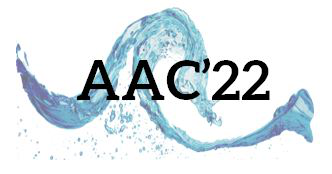Speaker
Description
Plasma-based acceleration (PBA) is a promising approach for generating high quality ultrarelativistic beams to drive next-generation x-ray light sources and particle collider experiments. Over the years, research has largely focused on injection methods that use a density down ramp or field ionization to generate such beams. Recently, we proposed and demonstrated new methods of controllable injection that use evolving electron drivers to excite nonlinear plasma wakefields [1,2]. In the first method, wake expansion and injection are triggered by focusing the electron driver in the nonlinear blowout regime [1]. We describe the physics of this process and present a predictive model to characterize injection in the self-focusing regime. The model is used to describe how the wake evolution and final injected beam parameters scale with the driver parameters. Parameter scans of particle-in-cell (PIC) simulations using OSIRIS are presented and compared with the model predictions for different driver parameters. In the second method, high quality beams are generated utilizing a “flying focus” produced by a drive beam with an energy chirp [2]. The evolution of the wake is determined by the speed of the density centroid, which can be superluminal or subluminal. Using PIC simulations, we demonstrate that a wake driven by a superluminally propagating flying focus of an electron beam can trigger injection. Simulation results indicate that GeV-class electron bunches with high normalized brightnesses (>$10^{19}$ $\text{A}/\text{m}^2/\text{rad}^2$) and low projected energy spreads ($<1\%$) can be produced using both methods.
[1] T. N. Dalichaouch et al., Phys. Rev. Accel. Beams 23, 021304 (2020).
[2] F. Li et al., Phys. Rev. Lett. 128, 174803 (2022).
Acknowledgments
This work was supported by US DOE through Grant No. DE-SC-0010064 and FNAL Subcontract No. 644405, and NSF Grant No. 2108970

